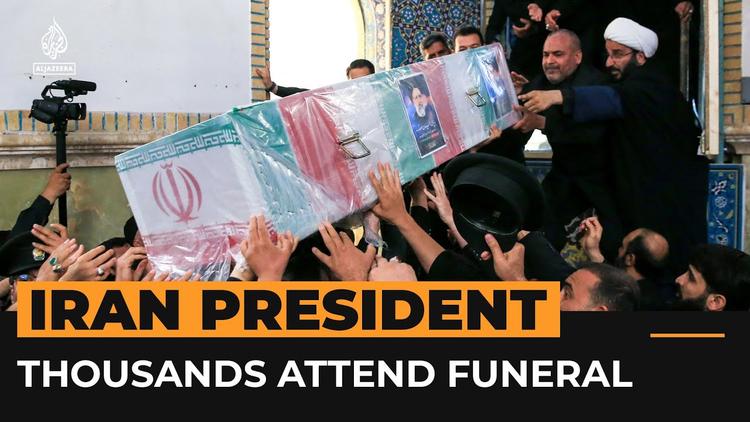May 24, 2024
Newark, Delaware
(Special to Informed Comment) – In the words of the great poet Hafez, “Be happy
that the tyrant did not make his way home”

While all eyes
were on Gaza and the genocide taking place, an event in the mountains of
Iranian Azerbaijan changed the news.
The death of
President Ebrahim Raisi and his entourage, including the foreign minister
Abdolahian, after a helicopter crash in
the mountainous region of northern Iran will leave no vacuum. At least that is what most analysts say. In fact, as long as Khamenei is alive, no
real changes will take place.
As all things
indicate, there will be some mourning by a segment of the population and then
life goes on and business as usual.
Raisi was just a
puppet as his deputy who will be an interim president is the man behind the
scenes having enormous economic leverage and close to the supreme leader’s
confines.
Raisi was 63
when he died.
Raisi was
fifteen when the Iranian Revolution happened.
He soon joined the ranks of the Islamic revolutionaries and rose up in
status and found an opportunity to become a prosecutor at the age of 20. He was not alone in this rapid accession to
power.
The infamous
Death Commission was comprised of all young men, some clergy and some not. They oversaw the execution of some 4000
political prisoners, some of whom whose sentences had finished, waiting to be
released. Their families, waiting for
their beloved, only got a bag of their belongings instead of welcoming them.
Iraj Mesdaghi,
who was one of the former pollical prisoners, released later, has written
extensively about those days, the cruelty of the guards and the role of Raisi.
He recounts: “There was a young man who
was from Karaj, Raisi knew him from his
days as the prosecutor in that city; he
had epilepsy and could barely walk. He
was condemned to death. Another prisoner
lifted him up and carried him to the gallows, all under the watchful eyes of
Ebrahim Raisi.”
Young men became
members of the Basij militia and Revolutionary Guards paramilitary at the
beginning of the Revolution. They
represented perhaps a segment of society who were uneducated and deeply
religious. What Raisi represented was
exactly the ones who were marginalized during the Pahlavi era. They did not belong to the intellectual
elite who had very little connection to the masses of people in the rural
areas.
In many ways, we
can compare them to a large portion of Trump supporters.
Raisi and his
ilk came to power when nationalists and leftists and all others were
undermined. The taste of power and greed
for money overwhelmed them to the extent that holding on to it meant the
oppression of others. Oppression of
women under Raisi became even worse. The
gasht ershad or the morality poli. which
had been non-existent during Rouhani came into full force, thus resulting in
the incident that took the life of Mahsa.
When Mahsa
Amini, a young Kurdish woman was taken, beaten, interrogated harshly, and went
into a coma and died a few days later, all Iranians and the world reacted. She was not the only one. Dozens of women, young and old were taken
into custody, raped and murdered. The
feminist movement, Zan, Zendegi, Azadi came into being. The world responded. Eiffel towers was lit with the slogan. Women, Life, Freedom.
I remember
visiting Iran in 2017 and 2019. I saw
many young women with little hejab or not at all. No one said anything and no one did
anything. Things changed with Raisi’s
presidency.
The men of the
Islamic Republic have used every measure to silence women. Sometimes women of their own league are also
involved. This was the case with Mahsa;
her interrogator was a lumpen accompanied by his female interrogators.
The harsh
measures taken during Raisi’s term, even with his populist image (going to
villages and spreading “good-will”)
Included more
suppression, more executions, more torture, and more strangulation of the
Iranian society.
The economy
under Raisi sanked. It was not just the
sanctions but mismanagement and corruption.
Whether anything
new will happen, it is hard to tell.
Iran is always unpredictable.

No comments:
Post a Comment